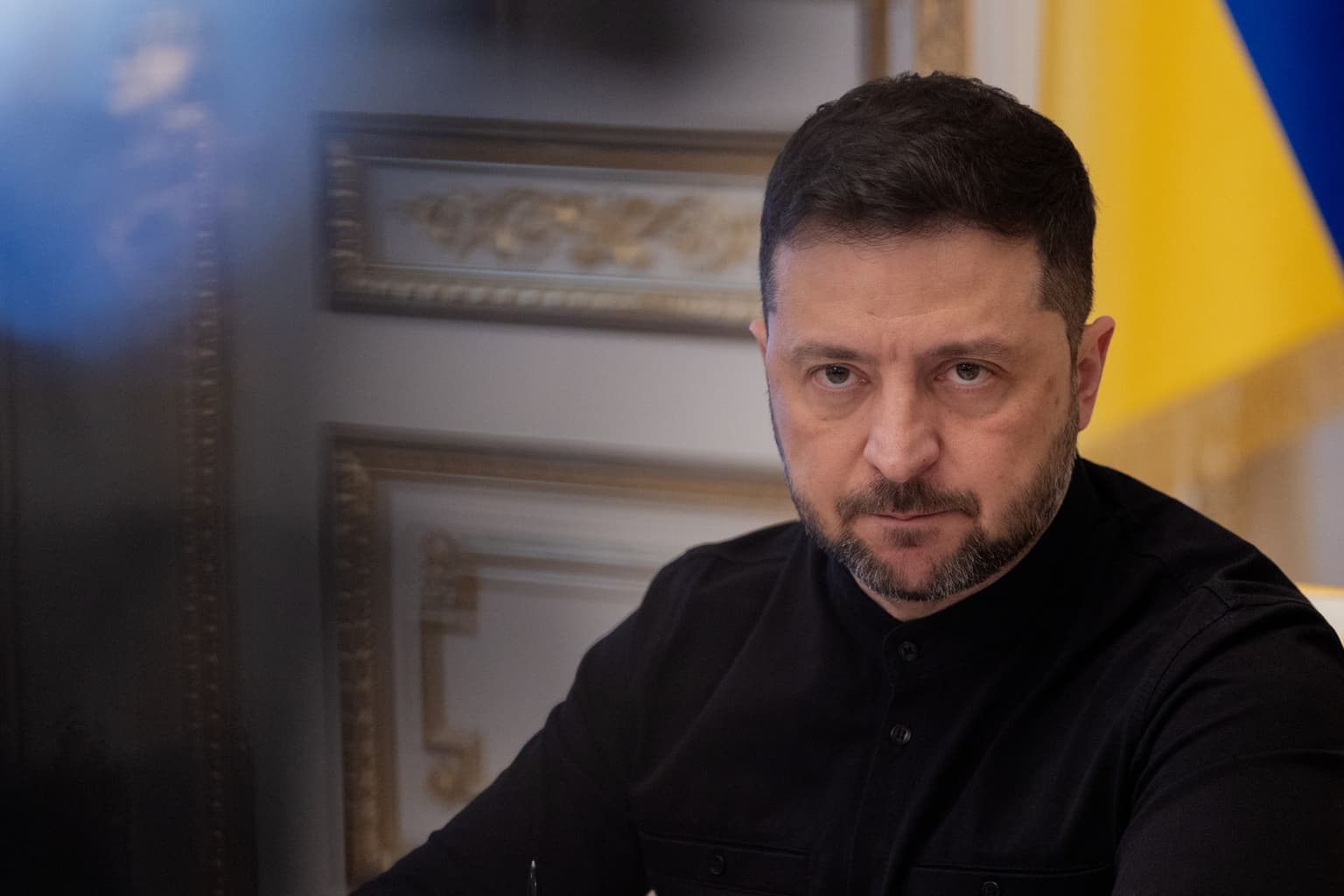Ukraine's spy agencies destroyed Putin's vaunted 'Oreshnik' missile deep inside Russian territory, Zelensky says

Ukraine’s security services destroyed a Russian Oreshnik ballistic missile inside Russia during the summer of 2024, President Volodymyr Zelensky said at a press briefing on Oct. 31.
The operation involved Ukraine’s Security Service (SBU), the Defense Intelligence Directorate (HUR), and other branches of the Defense Forces, Zelensky said.
SBU chief Vasyl Maliuk later specified that the nuclear-capable missile was destroyed at the Kapustin Yar missile range in Russia’s Astrakhan Oblast — a major site for testing Moscow’s strategic weapons.
Zelensky added that Russia can produce up to six such missiles per year and is reportedly seeking to deploy them in Belarus. "It has a range of up to 5,000 kilometers and a 700-kilometer dead zone. Our partners in Europe should pay attention to this," he added in comments reported by Suspilne.
Russia first used the experimental Oreshnik missile during a strike on the Ukrainian city of Dnipro on Nov. 21, which Putin said was in retaliation for Ukraine’s use of U.S. and British long-range missiles against Russian territory.
What is the Oreshnik missile?
Few details about the weapon have been disclosed, but defense analysts believe the Oreshnik is an upgraded version of Russia’s RS-26 Rubezh, first developed in 2011.
Announcing the missile in November 2024, Russian President Vladimir Putin said Oreshnik, which means "hazel" in English, is a new invention that Western air defense systems would not be able to intercept.
The Oreshnik is designed to carry nuclear weapons. However, Putin said it was not armed with a nuclear warhead during the attack on Dnipro.
"In combat conditions, a test was carried out of one of the latest Russian intermediate-range missile systems. In this case, with a non-nuclear hypersonic version of a ballistic missile," he said in a live speech on Nov. 21, 2024.

The Oreshnik described by Putin was so new that barely anything is known about it other than what he claimed during his speech.
The reality however, appeared to be slightly different.
"I'd be extremely shocked if this missile system had more than 10% new parts," Fabian Hoffmann, a defense expert and doctoral research fellow at the University of Oslo, told the Kyiv Independent at the time.
"I think basically they just took apart the RS-26 or just cannibalized it, and then put together this new missile with a couple of upgrades, and a new paint job."
The RS-26 Hoffman refers to is the RS-26 Rubezh, of which quite a bit is known.
First produced in 2011, and successfully tested in 2012, the Rubezh is a 36,000 kilogram, nuclear capable, intermediate-range ballistic missile (IRBM) with a known range of 5,800 kilometers.
Its declared but undemonstrated range of 6,000 kilometers would only just nudge it into the category of an intercontinental ballistic missile (ICBM).
Its development and deployment was actually halted in 2018 in favor of the Avangard hypersonic glide vehicle.
The Rubezh is equipped with a MIRV payload, which stands for Multiple Independent Reentry Vehicles, which can be seen in videos of the attack on Dnipro.
Footage shows multiple projectiles hitting the ground, but without the large explosions normally associated with conventional missiles or payloads, suggesting it was carrying essentially a dummy warhead.
HUR provided further details of Oreshnik in Noveber of last year, claiming it is actually just a different name for a previously known missile called "Kedr," translated as "cedar," which Russia tested in October 2023 and June 2024.
The missile that struck Dnipro was equipped with six warheads, each containing six submunitions, and reached speeds exceeding Mach 11 (around 13,500 kilometers per hour) as it descended, HUR added.
"I think it's really important that we don't overreact," Hoffman said, adding the missile itself isn't anything particularly new despite what Putin said.
"I like his 'hypersonic' comment — of course he had to put that in, but every medium-range ballistic missile will reach hypersonic velocity at one point, so this is just nothing," he added.

A U.S. official speaking on condition of anonymity echoed the sentiment, telling the Kyiv Independent at the time that while "we take all threats against Ukraine seriously, it is important to keep a few key facts in mind."
"Ukraine has withstood countless attacks from Russia, including from missiles with significantly larger warheads than this weapon.
"Let me be clear: Russia may be seeking to use this capability to try to intimidate Ukraine and its supporters, or generate attention in the information space, but it will not be a game changer in this conflict."










